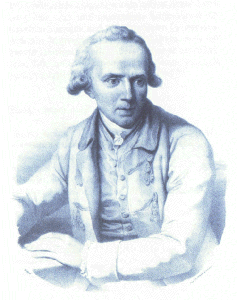Medicine in the 18th century:
Samuel Auguste A. D. Tissot
(1728 - 1797)

Treatise on Epilepsy or the Falling Sickness (1771)
In order to be in a position to cure this disease, one must first take pains to examine whether there is any sympathetic cause which supports it, and what this could be; or whether it is an idiopathic one, that is to say whether it simply stems from an over-sensitivity of the brain...
At last, valerian has fortunately become the favourite remedy of all sensible physicians... I am convinced that, if this does not have an effect, then it is because the malady is incurable.
Correct statement:
- Differentiation between "idiopathic" and "sympathetic" epilepsies.
Idiopathic: Epilepsy is mainly caused by an inherent tendency to the disease.
Sympathetic (symptomatic): The epilepsy is a symptom of a primary disease (e.g. brain tumour, metabolic disturbance, cerebral scarring after injury).
Incorrect statement:
- Valerian is a good remedy for epilepsy. (Correct: Valerian can have a calming effect, but does not suppress seizures.)
--- close this window ---